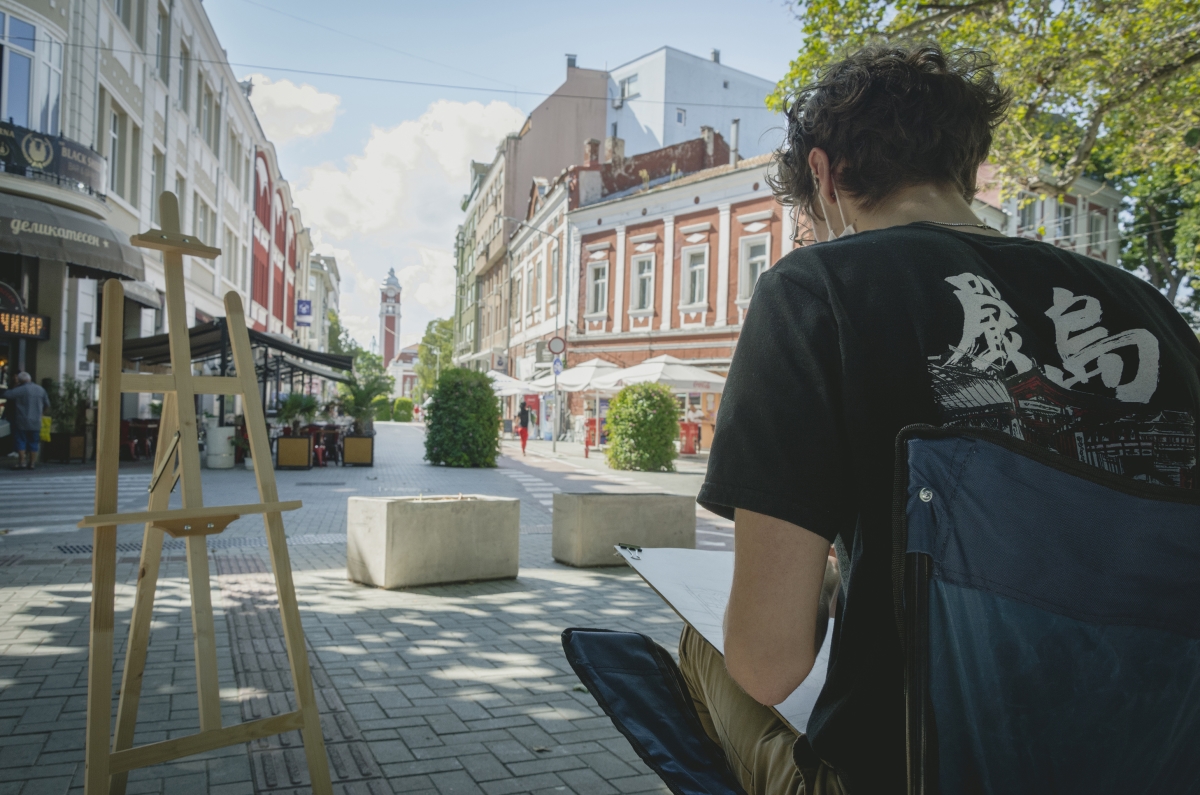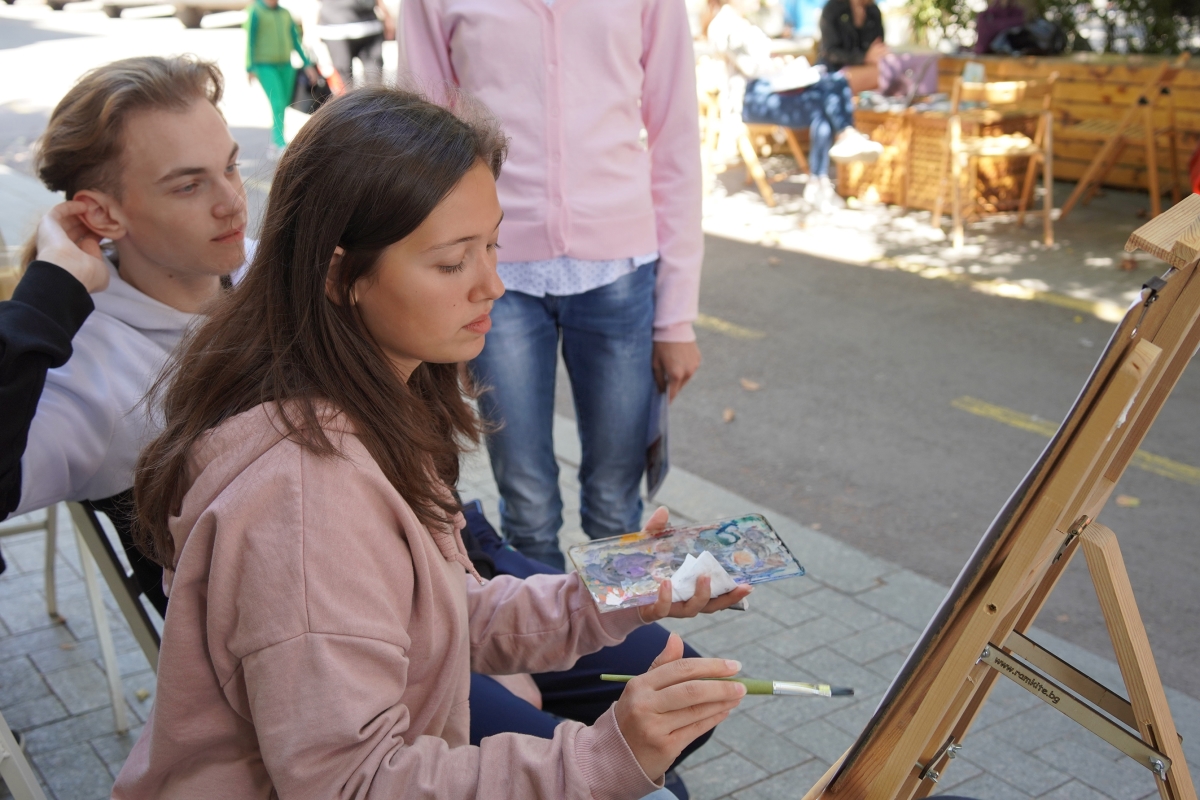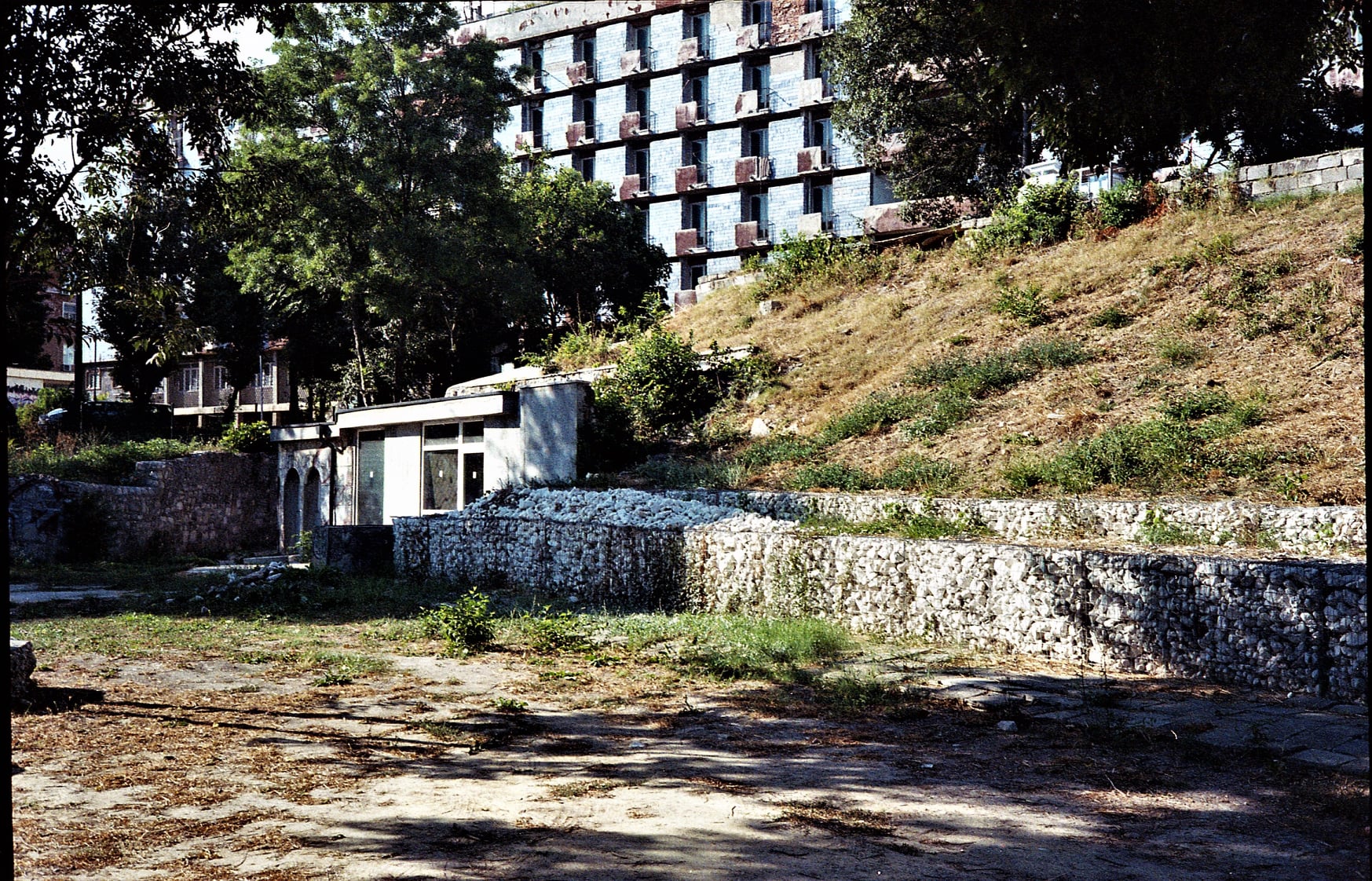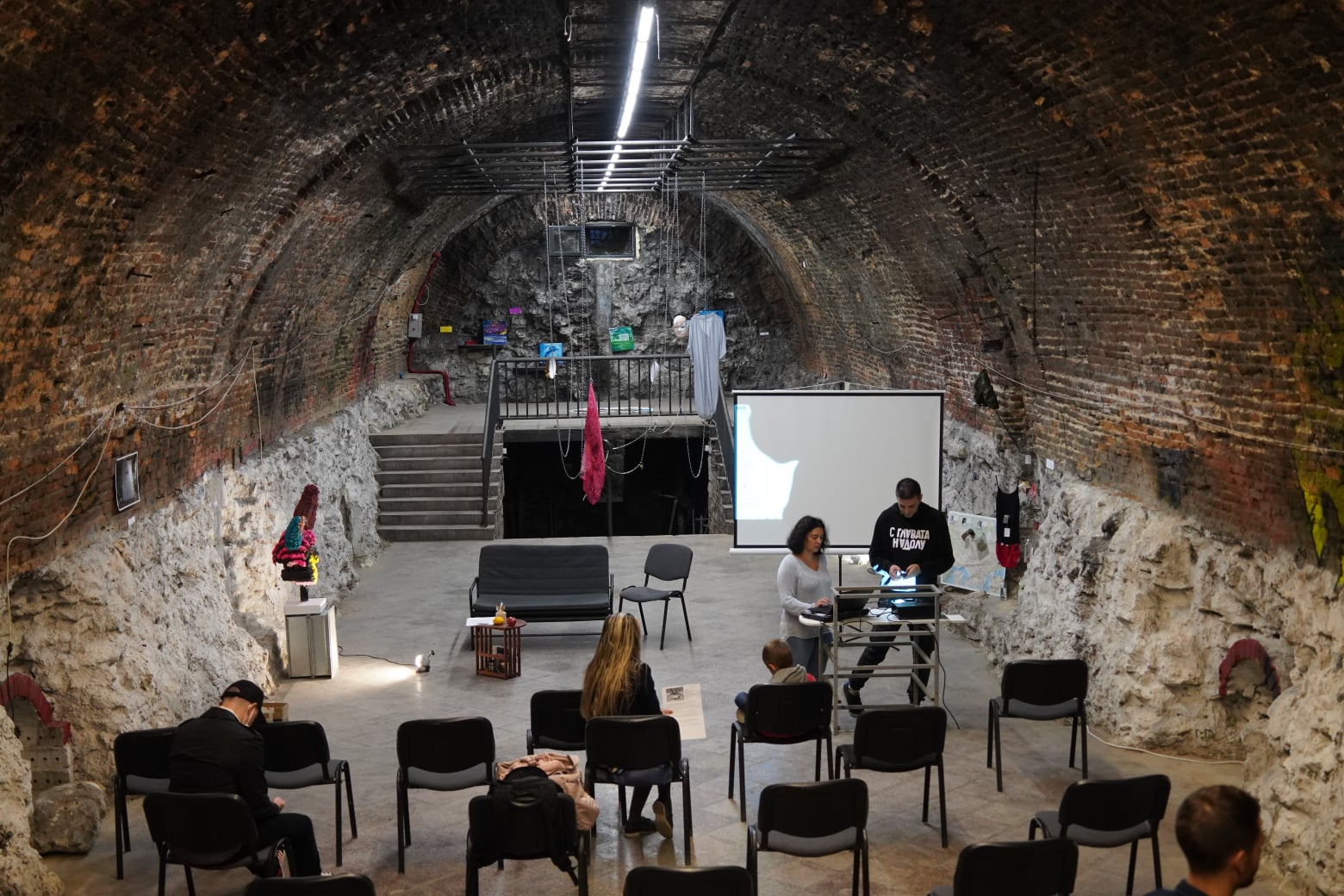Thessaloniki gets ready for its metro launch in November
The underground rapid transit lines have been under construction for almost two decades due to various project delays
 TheMayor.EU logo
TheMayor.EU logo Is it gentrification or is it re-adaptation?
Many people might think of the New European Bauhaus as an updated term for ‘gentrification’. Falling into such a trap could be misleading and we hope to clarify the distinction between the two. This is where two showcase initiatives in the city of Varna, both led by the Talyana Association, have the mission to show us how we can think about NEB and what makes this a potentially veritable grassroots movement.
The creative people behind Talyana also seek to answer the question of what happens to a city after the spotlight of being the European Youth Capital is switched off? Varna held that glamorous status in 2017, and that year, and the couple of years preceding it, were filled with brimming enthusiasm and activities. But then the creative energy often wanes. This is why there is hope in the city that the New European Bauhaus can provide the answers to more sustainable and durable urban rejuvenation.
The name of the association – Talyana - is filled with various levels of symbolism. For one, it comes from the word ‘talyan’, which is a static fishing net laid on the seafloor to trap fish. It is designed so the fish can enter but cannot leave. Talyana is also the name of the proposed arts district located in the core of Varna’s old town, and home to the highest concentration of architectural heritage from different eras.
If you are wondering why the quarter should be named after a fish-catching device, the answer is that it is meant as a playful reference both to the city’s maritime location and to another Bulgarian art district – Kapana in Plovdiv. The word ‘kapan’ means a ‘trap’ in Bulgarian.
Reportedly, the idea for creating such a district belongs to Varna’s Chief Architect Viktor Buzev, who proposed it back in 2015 when Varna was preparing to be the host city for the European Youth Capital. The proposal found fertile ground and more than 40 different initiatives took place there in 2017 to celebrate the special year for the city.
The true testament to the attractive potential of the arts and crafts district idea, however, came to the fore the following year when City Hall moved its attention to other pressing problems of the city. The civic sector wanted Talyana to be more than just an ephemeral art performance and to live on as a new type of cultural and residential space. A wide range of people, such as architects, designers, historians, communication specialists, lawyers and political scientists came together to form an association that would seek to flesh out with content the form of Talyana.
For one, they discovered that although rejuvenation was happening in the district it was happening piecemeal and without interaction among all the sectors of society. The residents and guests, particularly, were left out of the ‘gentrification’ process and could only play a passive role of being recipients of someone else’s renovation decisions.
This is where the association wanted to break the mold and find the common interest points among all the sectors: public, private and civic in a way that would provide valuable feedback and let everyone know that they have a stake in the Renaissance process of old Varna.
In the first part of this exposé we already looked into some of the regenerative initiatives combining social causes with beautiful architecture that took place in Talyana district. Now it´s time to expand our perception of what rejuvenation might mean, even further.
Old Varna is particularly notable for its Bel Epoque buildings, many of which have been renovated or are undergoing the process with the aim of providing boutique hotel experience to visitors, the right kind of coffee brew to connoisseurs and the perfect antique gift to tourists. In other words, these are the positive sides of gentrification to what had become a socio-economically depressed district in the 1990s and 2000s.
Talyana Association, however, is mindful that there needs to be more than just pretty facades that only tourists notice. They want the local residents to learn to appreciate them as well and as a result, start to feel more connected to the idea that they live in a beautiful and unique place.
Since 2019, the association has been behind the organization of annual plein air painting contests under the guidance of Architect Belin Mollov. Plein air, some might say, is just a fancier word for the act of painting landscapes while sitting outdoors. Mariya Ivanova, the coordinator behind the contest, who is also a graphic designer, is adamant that this artistic outing has a much more meaningful purpose and that is reflected in the way it is carried out.

The Talyan plein air is more than just outdoor painting event. Source: Talyana Association / Todor Velikov
Part of it is the involvement of art students from Varna’s Arts and Humanities High School “Konstantin Preslavski”. The association provides the materials, thanks to financing from the municipal Cultural Fund and donations, and the students are invited to spend some time and paint the beautiful buildings located in different parts of the district.
On one hand, that has the aim to let the youngsters develop more technical skills in terms of architectural painting together with a newfound appreciation for the monuments of Talyana. On the other hand, it gives students the feeling that they also leave a legacy. Their works are published in a catalogue and also taken for exhibitions across the country. The paintings are collected at the school and serve as examples for the next generation of budding artists because it gives them inspiration to also take part in the upcoming editions.
“You see, the Plein Air is like playing Mozart. It shows us different interpretations of the same object. The same buildings are painted each year, but the results differ depending on the personal style of the artist,” explained Mariya Ivanova.
When the artists start painting this invariably attracts the attention of passers-by, who stop to admire the work in progress and chat. That effect is, without a doubt, much sought by the organizers because it makes residents and visitors to the district take a pause in their lives, raise their gaze and actually notice the cultural monuments.
Mariya calls this the “socialization of architectural heritage” since it places the facades in the spotlight and makes them the topic of conversation among the people on the ground. And since the artists would need to concentrate on their work, the event also counts with the participation of students studying history or philosophy who are there specifically to chat with those who stop by.

The plein air is designed to attract interest from the general public and passers-by.
Source: Talyana Association / Yakov Shustov
The non-art students are knowledgeable about the history of the buildings and the area and are more than happy to share it with the people on the street and encourage conversations. For Mariya, this makes the initiative truly one of a kind. And there you have it, the civic sector in Varna has offered a whole new take on the social inclusion principle of the New European Bauhaus.
Some might say that it is easy to think in terms of reviving urban spaces when said spaces are located in attractive districts imbued with architectural monuments. Talyana Association, however, has taken the important step to shine the light on lesser-known and marginalized heritage to prove that it can also serve as the platform for revitalization.
The ReBonkers project aims to find a new function and meaning for a nearly 200-year old Ottoman gunpowder magazine. The facility is one of the best-preserved of its kind in Bulgaria, and it has seen many reiterations throughout its existence. It has served as an armoury and a military site before turning into a popular rock nightclub during the 1990s. Consequently abandoned, it attracted homeless people and drug users. Its state of disrepair contributed to glooming the landscape in what was already something of a marginalized residential district.

The gunpowder magazine features a new entrance, but its re-adaptation is still a work in progress. Source: Talyana Association / Yakov Shustov
Its location on the wrong side of the tracks, so to speak, near a busy road leading to an industrial zone, has not helped either. That is until, Architect Iavor Panev, a co-founder of the Talyana Association, took it upon himself to do something about it.
Recently, the ex-gunpowder magazine was the venue for an arts festival and exhibition, which drew in the actors and artists currently shaping the contemporary cultural landscape in the city. The spacious brick and mortar interior with an arched ceiling has also been used as the setting for video shoots. However, getting there, according to Architect Panev was not easy, and if anything, this is only the start of a journey.
He recalled that for him it was imperative to keep the authentic outlook and feel of the place while departing from its recent fame as an insalubrious hotspot of social decline.
That goes from retaining the original materials that were used in the construction of the armoury, retaining its overall shape and interior design to paying homage to its days as Bulgaria’s first alternative rock music club. In fact, the name ReBonkers is a nod to the club’s name – Bonkers – and to the ambition to Re-vitalize in line with the New European Bauhaus values.
Asked what the association’s vision for the development of this historic property is, Architect Panev explained: “The idea is to have an alternative youth space for culture, which could also turn into an incubator not only for art but also for ideas around innovations in terms of urban development through the prism of always respecting its authenticity. We want to test the place.”
The idea to revive the old armoury originated several years ago during the enthusiasm surrounding Varna’s candidacies for European Capital of Culture and European Youth Capital. In reality, though, things only properly took off last year after the installation of security alarms, doors, water and electricity. It was a tug-of-war between the association and the illegal occupants on who would prevail, and it often felt like being back to square one after the space got repeatedly broken in.

The ReBonkers interior preserves its original look, which can now be used as a multi-functional and flexible cultural space. Source: Talyana Association / Yakov Shustov
Iavor Panev then had the revelation that in order to counteract the ‘broken windows’ effect the space would need to actively start taking a life of its own. That is why the association began organizing cultural events there, even if there are still problems, such as a leaky roof, among others.
“We consulted the residents about their input. For example, they don’t want strong music until late and we took that into consideration. There is also a project for a skating ramp and outdoor fitness in the green area outside,” explained Architect Panev when talking about how the revival was received by the neighbours. He said that it has been met with general approval and even a sense of relief that something is finally being done with the abandoned spot.
In terms of sustainability, he explained that they would like to keep the soil that partially covers the roof of the building and plant it with water-retaining plants. Funding is still lacking, though, and that is a major issue for the association, which he has repeatedly stressed upon.
In his words, this is still a work in progress that will likely ‘take years’ to shape up. For us, it is also a poignant reminder that public space revitalization is often more of a journey than a final destination.
It is a theme that probes even deeper since projects like the ones happening in Varna remind us inadvertently that architectural creation can be a tricky thing. Structures are built to serve a specific purpose and function for their time, yet destroying them after that function has gone could also destroy the collective memory and DNA of the city. The sustainable and circular approach would be to not constantly erase and rebuild our cities but to find creative ways to adapt to what is already there.

The underground rapid transit lines have been under construction for almost two decades due to various project delays

Now you can get your wine in Talence by paying directly in Bitcoin

That’s because the state has to spend money on updating the railway infrastructure rather than subsidizing the cost of the popular pass

Rethinking renewable energy sources for the urban landscape

The examples, compiled by Beyond Fossil Fuels, can inform and inspire communities and entrepreneurs that still feel trepidation at the prospect of energy transition

Now you can get your wine in Talence by paying directly in Bitcoin

The 10th European Conference on Sustainable Cities and Towns (ESCT) sets the stage for stronger cooperation between the EU, national and local level to fast track Europe's transition to climate neutrality.

At least, that’s the promise made by the mayor of Paris, Anne Hidalgo

The underground rapid transit lines have been under construction for almost two decades due to various project delays

At least, that’s the promise made by the mayor of Paris, Anne Hidalgo

Hostal de Pinós is located in the geographical centre of the autonomous region

Despite its church-y name, the district has long been known as the hangout spot for the artsy crowds

Urban dwellers across the EU are having a say in making their surroundings friendlier to people and the environment.

Forests in the EU can help green the European construction industry and bolster a continent-wide push for architectural improvements.

Apply by 10 November and do your part for the transformation of European public spaces

An interview with the Mayor of a Polish city that seeks to reinvent itself

An interview with the newly elected ICLEI President and Mayor of Malmö

A conversation with the Mayor of Lisbon about the spirit and dimensions of innovation present in the Portuguese capital














